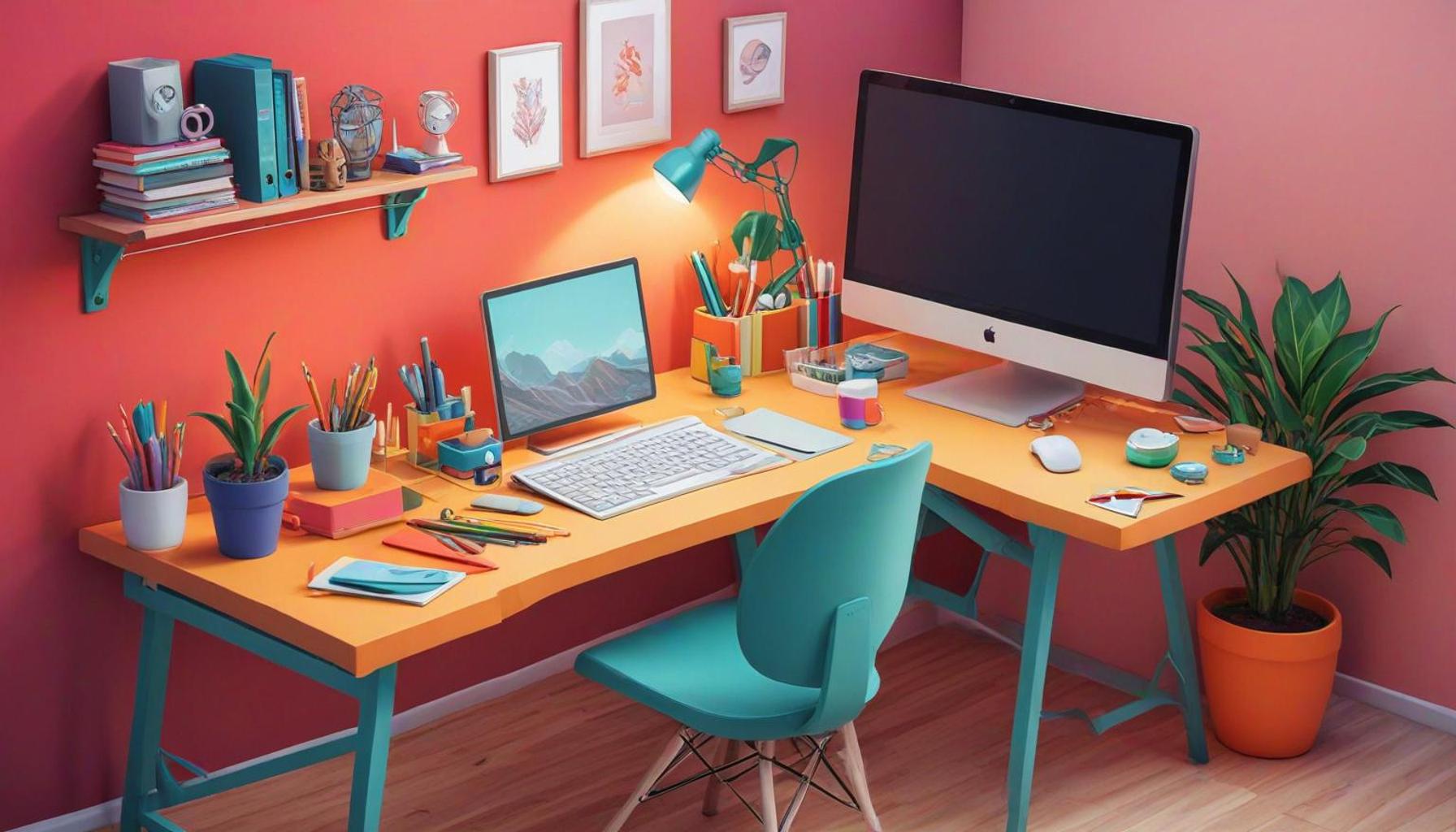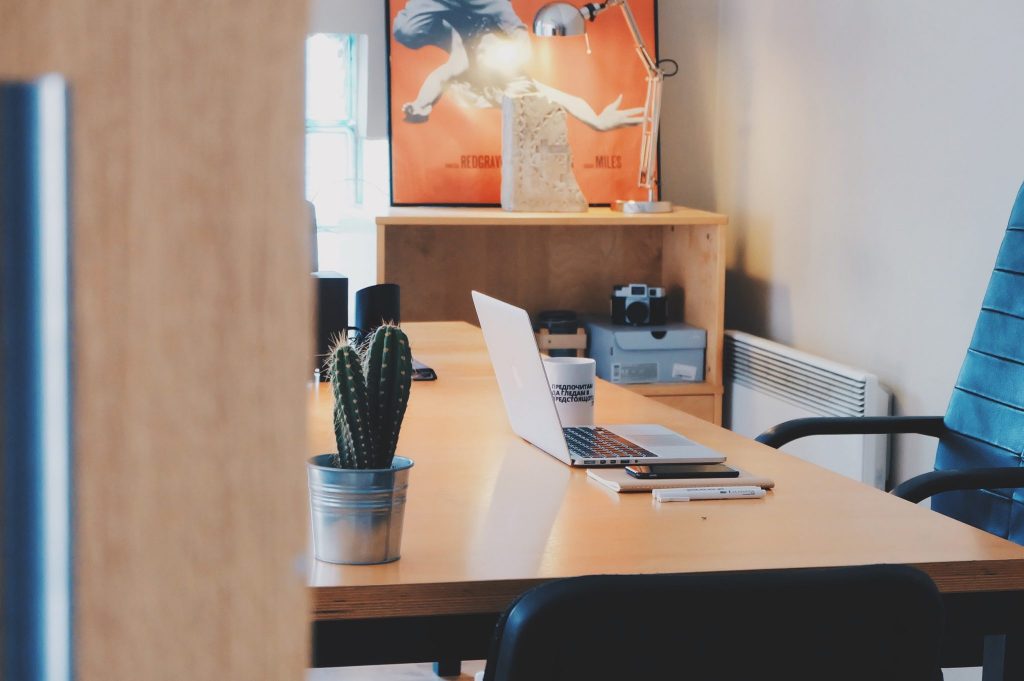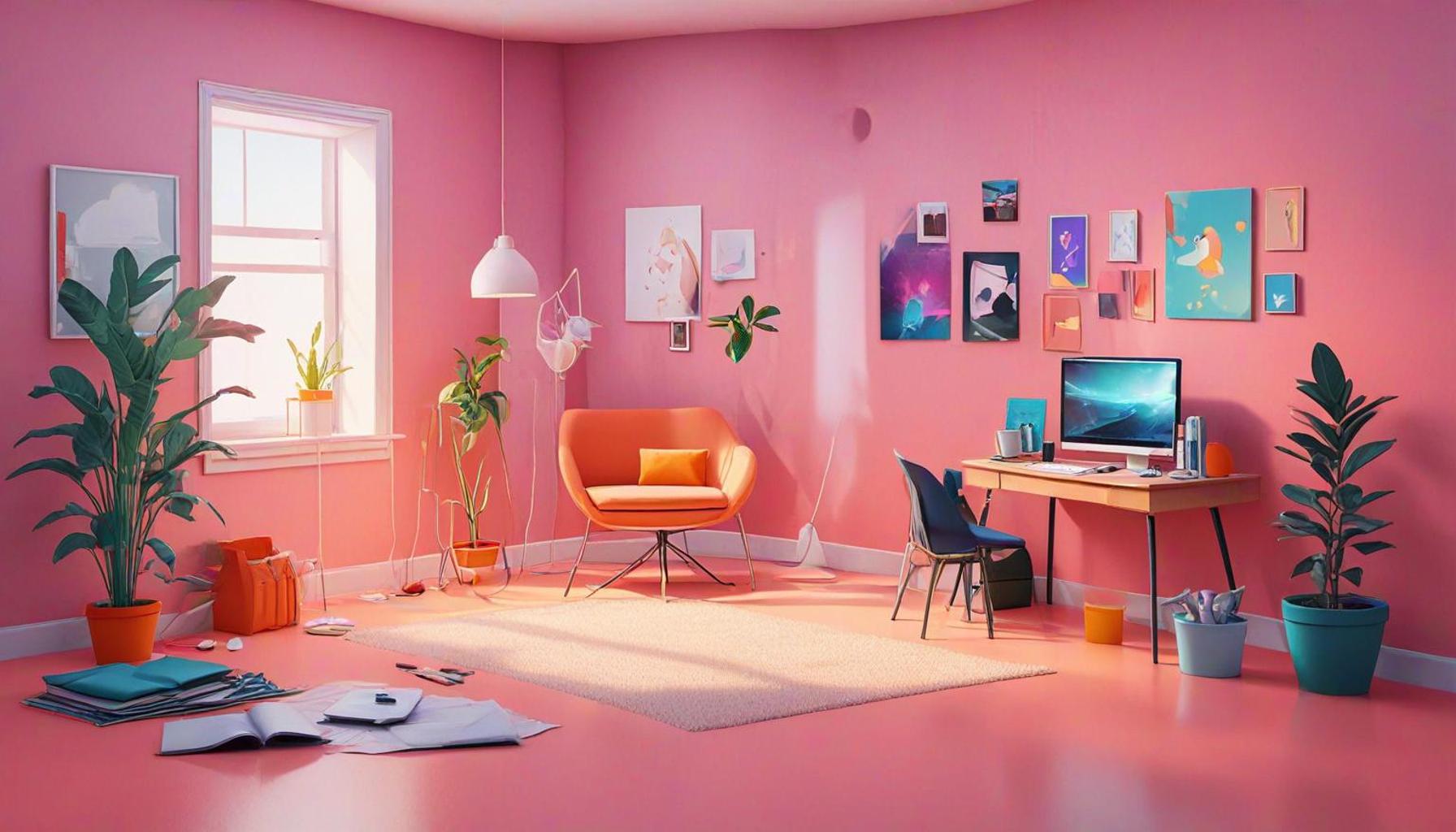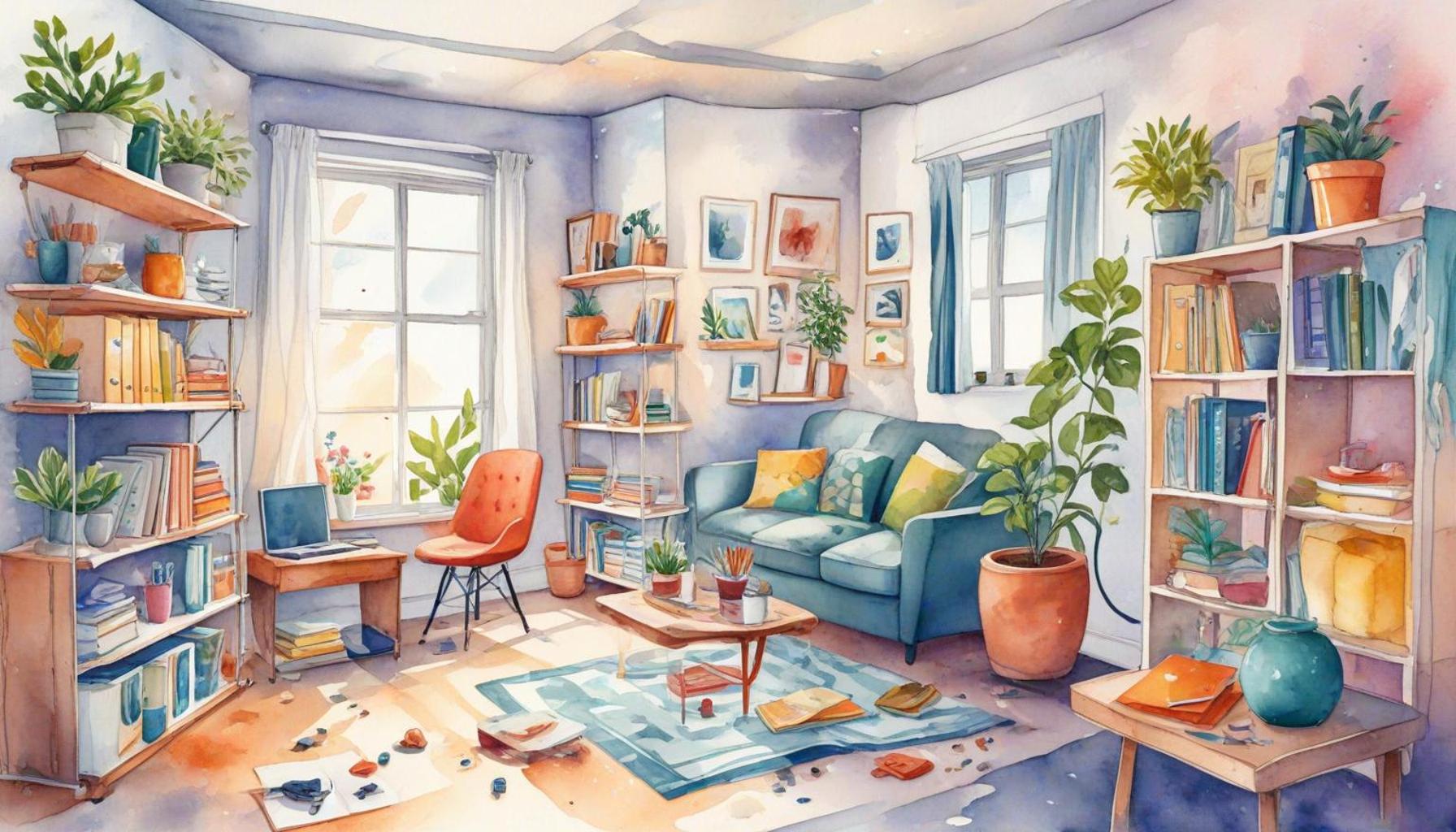Home Workspaces: How to Implement Minimalism to Increase Focus and Productivity

Transforming Your Workspace for Enhanced Productivity
In today’s fast-paced world, distractions are abundant. A well-organized home workspace can turn chaos into clarity, ultimately boosting your focus and productivity. The environment we work in significantly impacts our performance, and creating a clutter-free zone is essential for mental clarity and efficiency.
But how do you achieve this transformation? Minimalism is a proven approach that helps streamline your environment by eliminating excess and focusing on what truly matters. By adopting minimalist principles, you can create a workspace that enhances your productivity and encourages creativity.
Declutter Regularly
One of the most effective ways to establish a minimalist workspace is to declutter regularly. This means assessing your desk and removing items that are not essential for your daily tasks. A common practice is the “one-in, one-out” rule: for every new item you bring into your workspace, consider discarding or donating an old one. This could include outdated paperwork, unused office supplies, or items that distract you from your work.
For example, if you frequently find yourself reaching for a pen that doesn’t work, it’s time to let it go. Keeping only the essentials, such as a computer, a notebook, and a few writing instruments, reduces visual clutter and makes it easier to focus on your tasks.
Utilize Neutral Color Palettes
Another effective strategy is to implement neutral color palettes. Colors have a significant impact on mood and concentration. Calming tones like soft greys, muted blues, and off-whites can create a tranquil environment that promotes focus. For instance, consider painting your walls in a gentle hue or investing in office furnishings in similar tones. This color scheme minimizes distractions, allowing your mind to concentrate on the task at hand.

Choose Functional Furniture
Selecting functional furniture is crucial in a minimalist workspace. Opt for pieces that serve multiple purposes, such as a desk with built-in storage or an ergonomic chair that provides both comfort and support. For example, a desk with drawers can keep your essential items out of sight, maintaining a clean surface and eliminating the urge to clutter. Multifunctional furniture helps maximize your space while minimizing excess.
Implementing these principles can transform your workspace into a sanctuary of productivity. Research supports the notion that a cluttered environment can lead to increased stress and decreased efficiency. In contrast, a minimalist setup encourages mindfulness, promoting clearer thought processes and heightened focus.
Explore how minimalism can reshape your work habits and improve your overall well-being. A clutter-free, thoughtfully organized environment can pave the way for enhanced cognitive function and creativity. Let’s dive deeper into effective strategies that help you reduce distractions and embrace a clearer mindset in your home workspace.
DISCOVER MORE: Click here to learn about intentional design
Effective Strategies for a Minimalist Workspace
To successfully embrace minimalism in your home workspace, consider a series of intentional strategies that can foster an environment conducive to focus and productivity. These foundational practices not only help you tackle clutter but also instill a sense of order and calm that encourages efficient work habits. Understanding and implementing these strategies can bring you one step closer to a simplified, distraction-free environment.
Establish a Purpose for Each Item
Begin by taking a close look at everything in your workspace. Each item you choose to keep should serve a specific purpose. To get started, create a list of items you use regularly and separate them from those that merely take up space. This practice helps you evaluate the necessity of each item and allows you to streamline effectively. Here are some categories to consider:
- Daily essentials: Keep items that you use regularly, like your laptop, planner, or headphones.
- Tools for creativity: Set aside supplies that inspire and enhance your work, such as journals, art supplies, or reference materials.
- Decorative elements: Limit personal items to a few meaningful pieces that motivate you, like a favorite photo or a small plant.
Remember, the key is to surround yourself only with what enhances your work and motivation, avoiding distractions that do not contribute to your goals.
Optimize Digital Spaces
Minimalism isn’t limited to physical spaces; it extends into your digital work environment as well. A cluttered desktop filled with files and applications can be just as distracting as a chaotic physical workspace. Consider the following steps for optimizing your digital workspace:
- Organize files: Create folders for different projects and maintain a naming convention that makes files easily discoverable.
- Unsubscribe: Reduce email clutter by unsubscribing from newsletters and notifications that do not provide value.
- Limit open tabs: Use bookmarking tools to save important webpages rather than having numerous tabs constantly open.
By ensuring your digital workspace is just as streamlined as your physical one, you are creating a holistic environment that supports your productivity.
Incorporate Simplicity into Your Routine
Building a minimalist workspace also involves simplifying your daily routines. Establish a consistent work schedule and adhere to it as closely as possible. Setting specific hours for your work can create boundaries that minimize distractions. Furthermore, consider adopting the following practices:
- Time blocking: Designate specific time slots for tasks and stick to them to avoid multitasking.
- Limit interruptions: Use techniques like “Do Not Disturb” modes on your devices to foster a focused environment.
- Regular breaks: Implementing the Pomodoro technique can help refresh your mind, allowing you to maintain focus for longer periods.
Implementing these strategies can dramatically reshape how you interact with your workspace, ultimately leading to improved focus and productivity. A minimalistic approach fosters not only creativity but also mental well-being, paving the way for a more fulfilling work life. Let’s explore additional steps to cultivate a minimalist mindset and continue enhancing your workspace’s invitation to productivity.
| Advantage | Description |
|---|---|
| Enhanced Focus | A minimalist workspace reduces distractions, enabling individuals to concentrate on tasks more effectively. |
| Increased Productivity | By simplifying the environment, the decision fatigue is minimized leading to quicker, more decisive actions. |
When designing a home workspace that embodies minimalism, it’s vital to understand how clutter-free environments significantly enhance focus and concentration. Research shows that the human brain performs better in organized settings. A minimalist approach encourages a curated selection of essential items, naturally fostering an atmosphere of professionalism and intention. Moreover, as distractions diminish, the ability to enter a state of flow increases, thus enhancing productivity levels. This effect is akin to clearing out a busy highway allowing for smoother, faster travel. Within this context, productivity doesn’t just become about working harder; it transitions to working smarter.By streamlining the workspace, individuals can prevent overwhelming sensory inputs which can derail concentration. Practicing minimalism successfully integrates productivity strategies into daily routines, empowering professionals to prioritize tasks effectively and achieve more in less time.
DIVE DEEPER: Click here to uncover the power of conscious shopping
Moving Towards a Mindful Workspace
As you delve deeper into the minimalist approach for your home workspace, it’s essential to recognize that simplicity also extends to mindfulness practices that cultivate a productive environment. These practices not only minimize distractions but also enhance clarity and focus, leading to a more harmonious work-life balance. Here are some valuable strategies to help you create a mindful workspace:
Embrace Natural Elements
Integrating nature into your workspace can significantly influence your productivity levels and mental well-being. Studies show that exposure to natural elements boosts mood and creativity. Incorporating plants, such as succulents or air plants, can make your environment feel calmer and more inviting. Additionally, consider these natural elements:
- Natural light: Position your desk near a window or use full-spectrum light bulbs to mimic sunlight and reduce eye strain.
- Scents: Utilize essential oils or candles that promote focus, such as peppermint or citrus, creating an energizing atmosphere.
- Sound: Enhance your workspace with ambient sounds or soothing music to drown out distractions and help increase concentration.
These elements serve as both aesthetic additions and productivity enhancers, making your workspace feel more personalized yet still clutter-free.
Incorporate a Decluttered Aesthetic
The visual aspect of your workspace plays a significant role in how you engage with your tasks. A decluttered aesthetic doesn’t just mean fewer items; it’s about creating a visually appealing space that inspires creativity. Consider these aesthetic choices:
- Color palette: Choose a calming color scheme—cool tones like blues and greens can promote calmness and reduce stress, while warm hues can enhance focus and energy.
- Minimalist furniture: Opt for simple, functional furniture that supports both comfort and efficiency, allowing for a clean and organized look.
- Wall art: Select a few impactful pieces that inspire you and resonate with your professional goals, avoiding excessive decorations that can cause distractions.
By being intentional about the aesthetic of your workspace, you can create a visually stimulating yet minimalistic environment.
Practice Mindful Organization Techniques
Mindfulness and organization go hand-in-hand when seeking a minimalist workspace. Adopting mindful organization techniques can help not just with managing physical clutter but also with maintaining a clear mental state. Implement the following methods:
- Daily tidy-up: Dedicate the last few minutes of your workday to declutter your space. A clean workspace helps you begin each day with a fresh start.
- Clear desk policy: Keep only essential items on your desk. At the end of the day, return all non-essential items to their designated spaces.
- Weekly reviews: Set aside time each week to assess your tasks, goals, and workspace layout, ensuring that everything aligns with your productivity objectives.
Utilizing these techniques creates not just an orderly workspace but also fosters a clear mind, enhancing your overall focus and productivity.
The journey toward a minimalist home workspace is ongoing, requiring regular reassessment and intentional adjustments. By being mindful about the physical and psychological aspects of your surroundings, you can cultivate an environment that continually supports your productivity and well-being.
DISCOVER MORE: Click here to learn how decluttering can enhance your mental well-being
Conclusion: Embracing Minimalism for Greater Productivity
In our fast-paced world, creating an effective home workspace is not just about functionality, but also about cultivating an environment that nurtures focus and productivity. By implementing minimalism, you can transform your workspace from a chaotic hub into a serene and organized haven that enhances your work performance. The key lies in embracing simplicity, mindful practices, and aesthetic choices that resonate with your personal style while focusing on purpose.
As we’ve explored, integrating natural elements, maintaining a decluttered aesthetic, and adopting mindful organization techniques are foundational strategies that can greatly improve your productivity levels. Surrounding yourself with plants, utilizing calming color palettes, and committing to daily and weekly housekeeping routines can significantly influence not only your physical environment but also your mental state.
Furthermore, remember that achieving a minimalist workspace is an ongoing journey. Regular reassessment of your space and practices allows for adjustments that align with your evolving needs and goals. As you consciously curate your workspace, you’re not merely reducing clutter; you’re fostering a mindset that prioritizes clarity and purpose. By taking these steps, you will find yourself not only more focused and productive but also enjoying a healthier balance between work and personal life.
So embrace the principles of minimalism in your home workspace, and discover how simplicity can lead to profound improvements in both focus and productivity.


